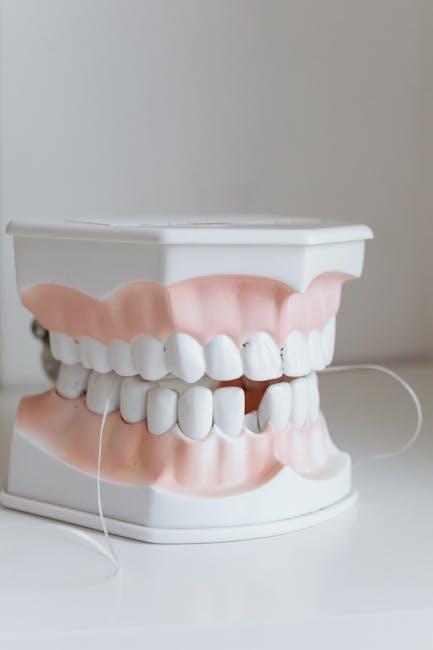Fluoride Ban Could Create Cavities For 1 Of Every 3 U.S. Kids – U.S. News & World Report
Recent discussions surrounding the potential ban on fluoride in public water systems have raised serious concerns about the possible impact on children’s dental health across the United States. Health experts warn that eliminating fluoride — a mineral known for its cavity-preventing properties — could lead to a significant increase in tooth decay among young populations. This article delves into what a fluoride ban could mean for American children, the science behind fluoride’s benefits, and practical steps parents can take to protect their children’s smiles.
What Is Fluoride and Why Is It Important?
Fluoride is a naturally occurring mineral found in water, soil, and various foods. It has been widely credited with preventing tooth decay by strengthening tooth enamel and making it more resistant to acid attacks from plaque bacteria and sugars in the mouth.
For decades, community water fluoridation has been recognized as a safe and effective public health measure that significantly reduces cavities among children and adults alike. The Centers for Disease Control and Prevention (CDC) estimates that water fluoridation prevents about 25% of tooth decay in children and adults.
Key Benefits of Fluoride in Dental Health
- Strengthens tooth enamel and promotes remineralization.
- Reduces the number of cavities, especially in children.
- Cost-effective public health intervention benefiting all socio-economic groups.
- Decreases the need for expensive dental treatments over time.
- Helps combat tooth decay in communities with limited access to dental care.
The Potential Impact of a Fluoride Ban on U.S. Children
According to a recent report by U.S. News & World Report, banning fluoride in public water supplies could lead to cavities in approximately 1 in every 3 U.S. children. This alarming projection points to millions of kids potentially facing more dental problems if fluoride is removed from water.
Statistics on Fluoride and Childhood Cavities
| Statistic | Data Point |
|---|---|
| Children likely affected by cavities after fluoride ban | Approximately 33% (1 in 3) |
| Current reduction in cavities attributed to fluoride | Up to 25% |
| Increase in dental treatment costs due to cavity rise | Estimated billions USD |
| Communities without water fluoridation | About 25% of U.S. population |
Why Is There a Push to Ban Fluoride?
The debate around banning fluoride largely stems from concerns about its safety, environmental impact, and ethical questions about mass medication through water supplies. Some groups argue fluoride exposure can have adverse health effects, though these claims are not strongly supported by mainstream scientific research.
Nonetheless, the discussion has prompted authorities and policymakers to reconsider water fluoridation policies, which could have unintended consequences for children’s dental health.
Practical Tips for Protecting Your Child’s Dental Health Without Fluoride
If a fluoride ban is enacted or if you live in an area without fluoridated water, it is essential to focus on other preventive measures to maintain oral health. Here are some practical steps parents can take:
- Use fluoride toothpaste: Even if water is not fluoridated, fluoride toothpaste remains a key cavity prevention step.
- Schedule regular dental checkups: Early detection and treatment of cavities can prevent severe decay.
- Encourage a healthy diet: Limit sugary snacks and drinks that can promote tooth decay.
- Promote proper oral hygiene: Teach children to brush at least twice a day and floss daily.
- Consider fluoride supplements: Consult a dentist about fluoride rinses or tablets if appropriate.
- Use dental sealants: An effective preventive treatment that protects children’s molars from cavities.
Case Study: Communities Without Fluoridated Water
Studies of communities lacking water fluoridation highlight the disparities in dental health outcomes. For example, regions in the U.S. that do not fluoridate their water show higher rates of cavities, particularly among children from low-income families who may have limited access to dental care and fluoride toothpaste.
One such case involves a rural community that saw a 15% increase in childhood cavities after local regulations discontinued fluoridation. After reintroducing fluoride treatments via school programs and community outreach, dental health improved markedly over a five-year period.
Firsthand Insights from Parents and Dentists
Dental professionals stress the critical role of fluoride in maintaining oral health. Dr. Emily Carter, a pediatric dentist, states:
“Fluoride has been one of the most effective tools in reducing cavities among children. Without it, we risk seeing an increase in preventable dental problems that affect overall health and quality of life.”
Parents also share concerns about how a fluoride ban might increase their children’s dental bills and discomfort, emphasizing the importance of fluoride for strong and healthy teeth.
Conclusion: The Need to Protect Children’s Dental Health
A fluoride ban could substantially increase cavities among U.S. children, threatening the progress made in oral health over the last several decades. While concerns about fluoride safety should be carefully evaluated, scientific evidence overwhelmingly supports community water fluoridation as a safe, effective, and equitable way to fight tooth decay.
Parents, caregivers, and public health advocates must stay informed and proactive, exploring alternatives if fluoride is restricted, and continuing to encourage good oral hygiene. Protecting children’s smiles today ensures healthier futures tomorrow.


